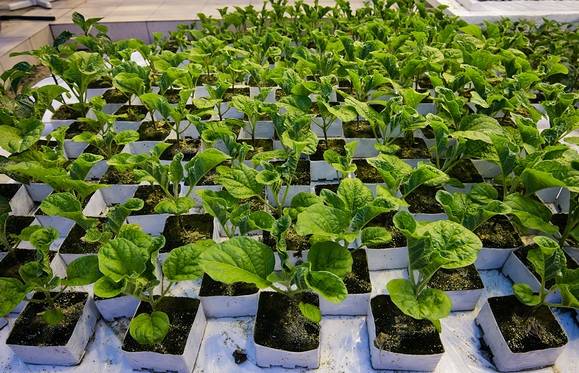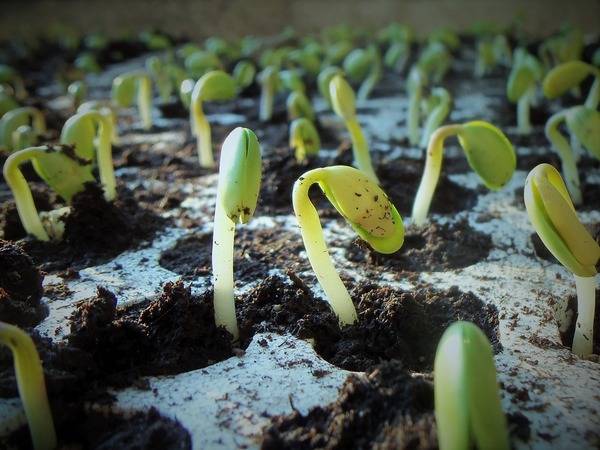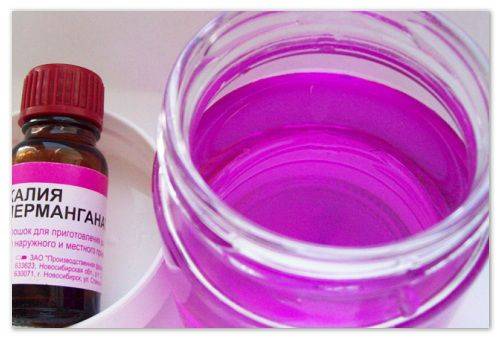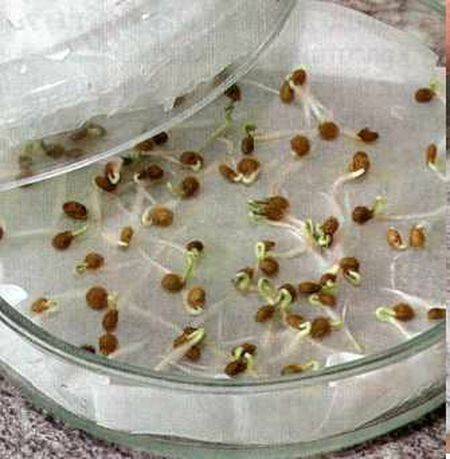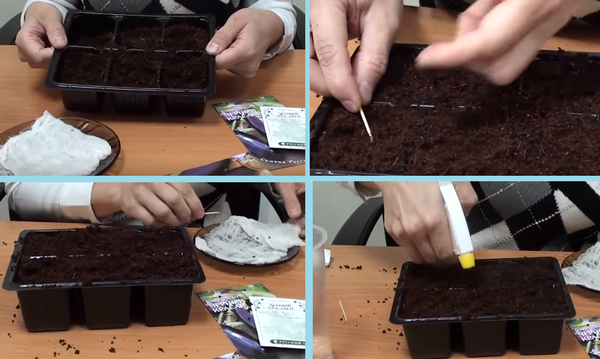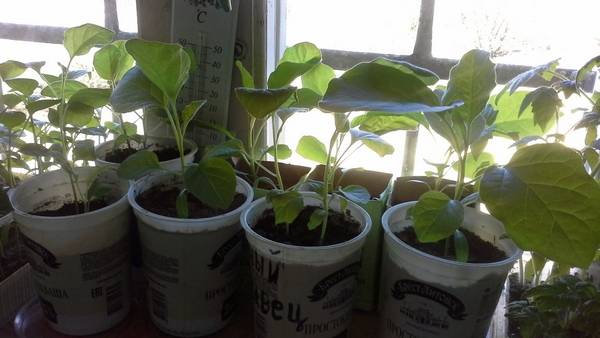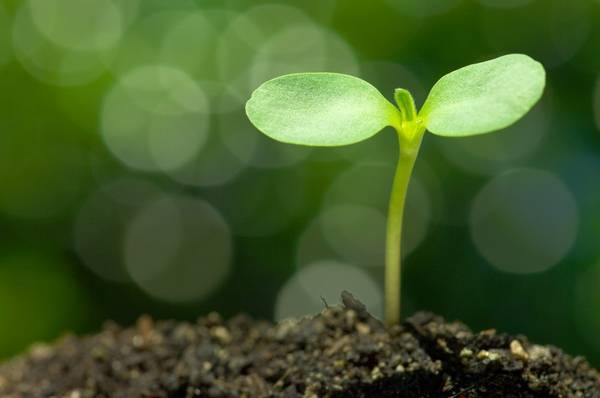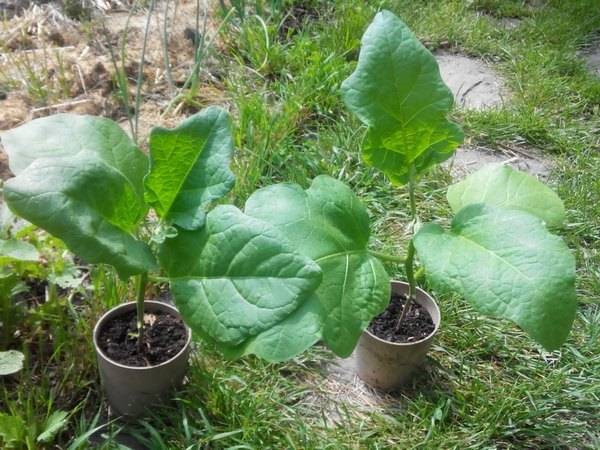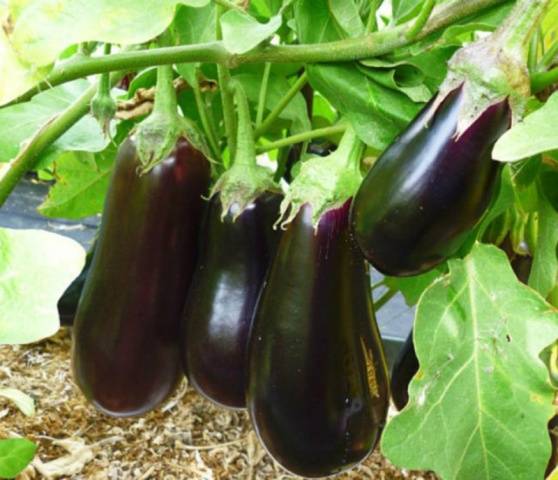Content
Eggplants are versatile vegetables that can be found in many dishes. Various stews, salads are prepared from the blue ones, they are added to the first and second courses, pickled, canned and fermented. Therefore, every summer resident dreams of growing eggplants on his own plot. However, this culture is quite capricious, so all stages of its cultivation must be carried out with strict adherence to the rules.
Much increases the chances of success when grown eggplant seedlings at home... After all, when buying seedlings, you can never be 100% sure of their quality.
In addition, tender eggplants should be transplanted from one place to another as quickly as possible.
How to grow eggplant seedlings at home and get an excellent harvest of blue ones in your own dacha - in this article.
Preparing seeds for sowing
Deciding on the type of eggplant is only half the battle. Although there is a small nuance - only varieties with early ripening are suitable for domestic climatic features, the rest simply will not have time to ripen.
It is much more responsible to properly prepare the seeds for planting. Firstly it is necessary to discard unsuitable seed material... One way is to put the seeds in water with the addition of table salt. 5% salt is diluted in warm water and eggplant seeds are immersed in this solution for a couple of hours. Those seeds that float to the surface can be collected with a spoon and thrown away - not empty, and they will not sprout. The rest of the seeds are caught and further processed.
To disinfect eggplant seeds, a solution of potassium permanganate is suitable, at the rate of 1 gram of manganese per 100 grams of water. That is, the solution must be strong enough, have a dark purple hue.
It is more convenient to place seeds in a container with a solution, having previously poured them into a linen bag. The bag can be attached to the edge of a jar or glass with manganese with a regular clothespin. In this position, the seeds are left for 20 minutes, after which they are thoroughly washed under running water from the tap.
Under natural conditions, eggplant seeds germinate very slowly, this process can take up to three weeks. To accelerate the growth of seedlings, it is recommended to pre-soak the seeds in warm water for about 12 hours, after which the seeds are laid out on a cloth and moistened with water. A saucer with a cloth and seeds is placed in a warm place (25-28 degrees), constantly moistened and pecked for several days.
Eggplants do not tolerate any transplantation in order to reduce the loss of seedlings, its need to be hardened... The first stage of hardening falls on the hatched seeds. There are two ways to harden:
- For several days, the germinated seeds should be kept at a temperature of 20 degrees during the daytime, and at night reduced to +5 degrees.
- Put the swollen seeds in the zero chamber of the refrigerator, where to keep them for 1-3 days.
Where to get soil for seedlings
The soil for growing eggplant seedlings at home can be purchased at a specialized store. But it is much cheaper and safer to prepare the substrate yourself.
Each experienced gardener already has his own, best, recipe for preparing a soil mixture for blue seedlings. Here are some of the most common recipes:
- sod land, humus, superphosphate, wood ash;
- sod land, peat, sand;
- mullein, sawdust, peat.
Ready mixture even before application fertilizers must be disinfected... To do this, use several methods:
- freezing the soil;
- baking soil in the oven;
- watering the earth with boiling water;
- making a solution of potassium permanganate.
Fertilizers are applied to the disinfected soil, mixed thoroughly and laid out in containers for seedlings.
The choice of timing of sowing seeds for seedlings
The timing of sowing eggplants depends on several factors:
- Eggplant varieties and their growing season.
- Planting method (greenhouse, heated greenhouse, open ground).
- Climatic features of the region.
- Weather conditions.
As a rule, eggplant seedlings are taken out into the open ground 65-70 days after the first shoots have appeared. Considering that seeds will need from 5 to 12 days for germination, you can calculate - plant eggplant is needed on the 80th day after sowing seeds in pots.
Of course, a lot depends on the region in which the vegetable garden is located. In central Russia, for example, eggplants are brought out to the beds somewhere in mid-May.
Most summer residents and gardeners are of the opinion that the best time to sow eggplant seeds is the end of February or the beginning of March.
Growing seedlings at home
The root system of eggplant is very fragile, even one damaged shoot will inhibit the growth of the entire plant. To minimize the loss of seedlings, it is better to plant it immediately in separate containers, then diving is not needed.
Round pots with a diameter of 7-10 cm are suitable as containers for seedlings. These can be plastic or peat cups. It's good if the opportunity is provided eggplant transplants with a lump of earth (peat glass or cutting a plastic container).
The pots are filled with a substrate for about 23, watered with warm water. Seeds are spread on the ground - three in each pot. The seeds are not sunk into the soil, but sprinkled with dry and loose soil - eggplants need oxygen.
If the seeds were previously germinated, the first shoots will appear on the 5th day after sowing, non-germinated seeds will sprout only after 10 days. During this time, plants need to be kept in a warm place - 25-28 degrees.
After 10 days, the pots are placed in a cooler room (about 16-18 degrees). At this time, the root system is formed in the eggplant, so that it is strong and powerful, the plant must be placed in the cold.
After 7-10 days during the day, the seedlings are kept at a temperature of 23-26 degrees, at night it should be slightly cooler - about 18 degrees.
Eggplant should be watered regularly - the ground should not dry out and crack. Also, the soil must be carefully loosened - a dense crust should not form around the stem. Water for irrigation should be warm.
How to highlight eggplant seedlings
The little blue ones love the sun very much, they need light as much as heat.Given the fact that the seeds for eggplant seedlings are sown at the end of February, it is easy to guess that the sunlight will not be enough for the seedlings.
therefore artificial lighting of plants is applied... This is done with powerful fluorescent lamps (70 watts). Fluorescent lamps are excellent for these purposes.
Lighting devices are placed at a height of about 50 cm from the eggplant seedlings. The daylight hours of this culture depend on the age of the seedlings:
- after the appearance of the first shoots, eggplant seedlings are illuminated with lamps 24 hours a day for the first three days;
- next days daylight hours should be about 15 hours;
- after the seedlings dive, or two or three true leaves appear on the plants, the lamps can be turned on for 12 hours a day.
How to feed and harden eggplant seedlings
The blue ones belong to those crops that are very fond of feeding. Therefore, if the plants do not develop well, do not have enough foliage, they are fed with mullein or chicken droppings.
When the seedlings are doing well, fertilization can be applied for the first time 10 days after the pick was made (or after the appearance of the third leaf). The procedure is repeated after another 20 days.
The best mixture for feeding eggplant is considered to be:
- potassium salt - 3 grams;
- ammonium nitrate - 5 grams;
- superphosphate - 12 grams.
After fertilization, the seedlings must be well watered with clean water so that the eggplants do not burn out.
You need to harden blue seedlings two weeks before disembarking to a permanent place. The procedure includes reducing watering and aerating the plants.
When the temperature outside stabilizes within 20 degrees, eggplant seedlings can be taken out for airing. Hardening begins with a few minutes, gradually the time increases to a whole daylight hours.
Such conditions contribute to the gradual adaptation of eggplant seedlings to their natural environment, the plants adapt more quickly to a permanent place after transplantation.
When to transfer seedlings to a permanent place
Eggplant seedlings should be stocky and strong. Bushes in height can reach 15-20 cm, have 7-8 true leaves, a few first buds. Moreover taller seedlings should be planted in the greenhouse, and for open ground the eggplants should be short and stocky.
Eggplant seedlings are transferred to greenhouses at the end of April. For film shelters, the beginning of May is suitable, and blue ones are transplanted into open ground in mid or late May (depending on the region and weather conditions).
What not to do when growing eggplant seedlings
There are several mistakes that inexperienced gardeners make regularly:
- sowing non-germinated seeds;
- using gauze to germinate seeds can break delicate sprouts;
- too deep planting of seeds in the ground (planting depth should not exceed 2 cm);
- installation of boxes with seedlings on non-insulated window sills.
Growing eggplant seedlings at home, you can be absolutely sure of its quality. There will be no surprises, like a different variety, with self-germination of seeds. But in order to get high-quality planting material, you will have to follow all the rules and requirements of this whimsical culture.
